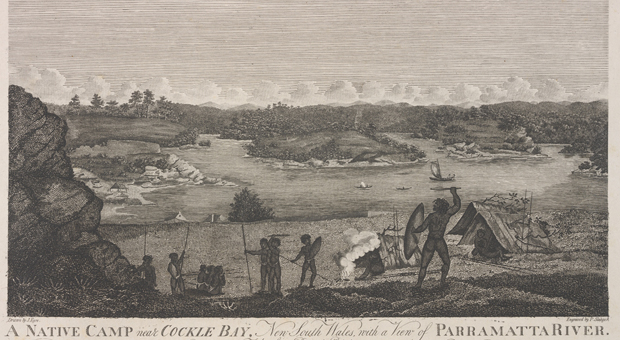
Stone artefacts from the KENS Site, measuring several centimetres each (image courtesy Dominic Steele Consulting Archaeology)
Author: Paul Irish and Tamika Goward
In 2003, archaeologists discovered a large Aboriginal campsite in the western part of central Sydney. It was named the KENS Site after the surrounding streets (Kent, Erskine, Napoleon and Sussex). The earlier building had been demolished and archaeologists were looking for colonial remains, when they found buried soil that appeared to have survived from before the arrival of Europeans. Archaeologists and members of the Metropolitan Local Aboriginal Land Council dug into this soil and found that it contained a considerable number of Aboriginal stone artefacts. As a result, a substantial excavation took place to learn as much as possible about the Aboriginal use of the site before the area was redeveloped. Around 1,000 Aboriginal stone artefacts were found.
Aboriginal people manufactured or ‘knapped’ the artefacts from several different types of stone. Apart from quartz, which was locally available as small pebbles eroding out of sandstone, Aboriginal people would have obtained other types of stone from tens of kilometres away across or perhaps beyond the Sydney region. A piece of stone known as a ‘core’ was the base stone from which artefacts were made. The KENS Site contained many cores. Aboriginal people expertly struck pieces of stone from these cores using another stone, and sometimes rested the core on a stone anvil.
The artefacts found at the site included everything from waste material to finished implements, so we know that Aboriginal people made and used stone tools at this campsite. The tools included a number of ‘backed artefacts’. A backed artefact is so-called because the side opposite its sharp cutting edge has been blunted or ‘backed’ to allow it to be hafted or perhaps even held. Studies have shown that backed artefacts had many uses including cutting, incising and drilling.
The number of people camped there, how often and for how long is not clear. The KENS Site is located on a flat area about half way up the eastern side of Cockle Bay (Darling Harbour), so Aboriginal people would have had access to fish and shellfish, as well as land animals in the forests around the site. Unfortunately, traces of their food, their wooden tools and other activities had been decomposed by acids in the sandy soils of the site long before it was discovered by archaeologists.
We do not know exactly how old the site is, but the type of stone tools and the way they were produced suggests that it was most likely within the last 3,000 years. Aboriginal people continued to camp at the site after the arrival of Europeans. Two artefacts were fashioned from European bottle glass using the same techniques as for stone tool making, showing us that Aboriginal people were adapting traditional practices to new circumstances after the arrival of Europeans.
References
V Attenbrow, 2010. Sydney’s Aboriginal Past. Investigating the Archaeological and Historical Records (Sydney, UNSW Press).
D Steele, 2006. Final Aboriginal Archaeological Excavation Report. The KENS Site (Kent, Erskine, Napoleon and Sussex Street), Sydney, NSW, Containing NPWS Site #45-6-2647 & Associated Areas of PAD (Report to Leighton Contractors Pty Limited).
AHIMS ID number: 45-6-2647.



